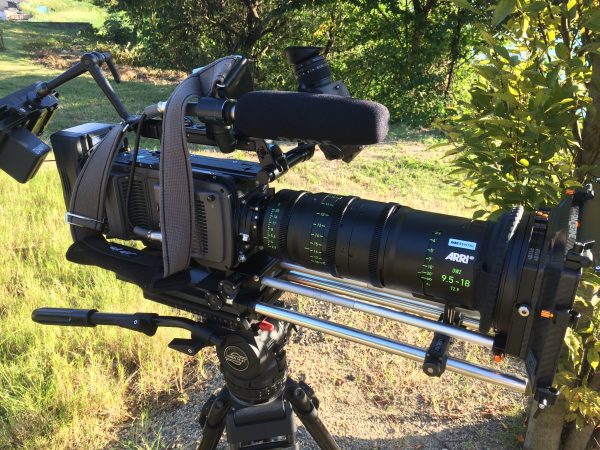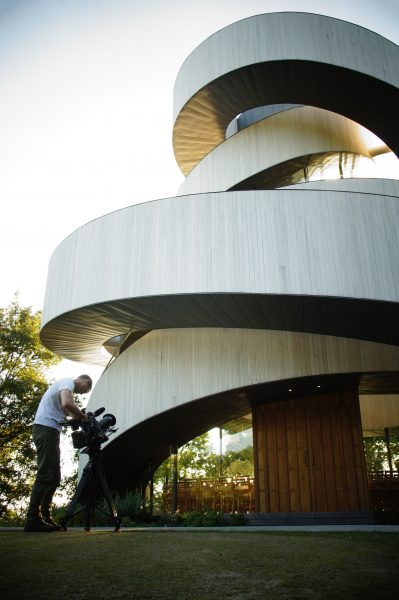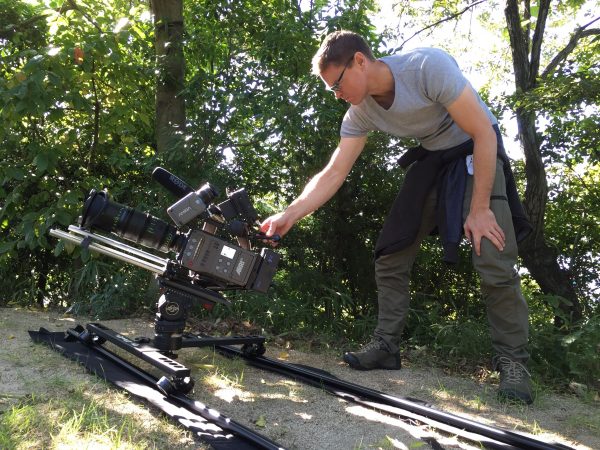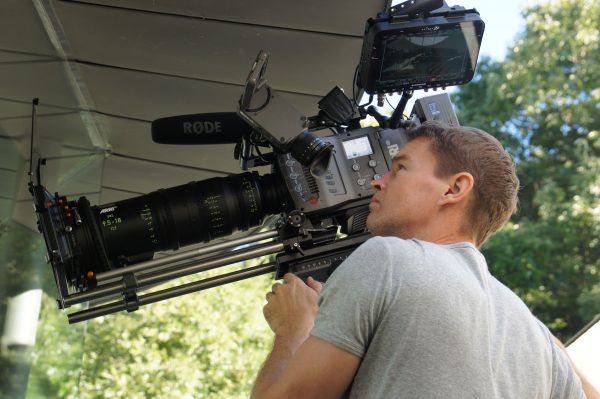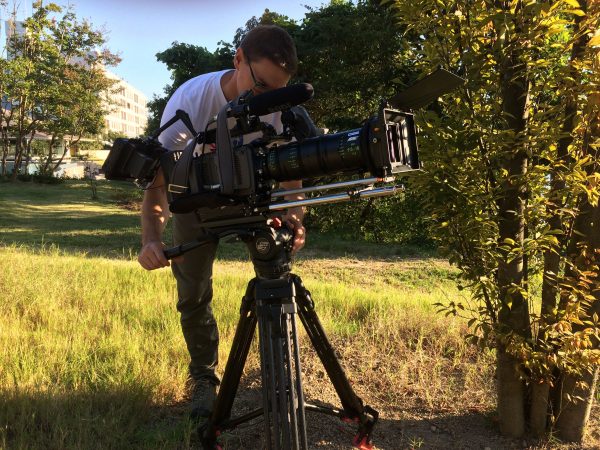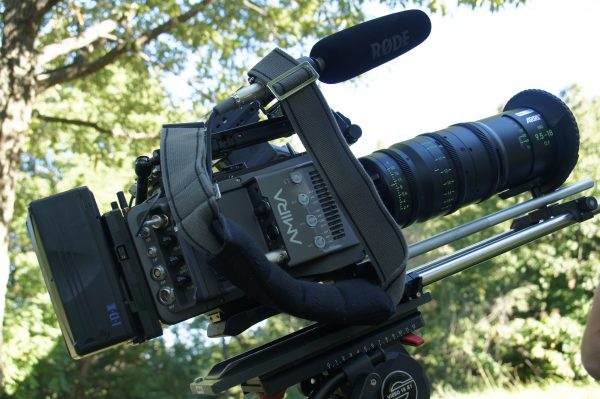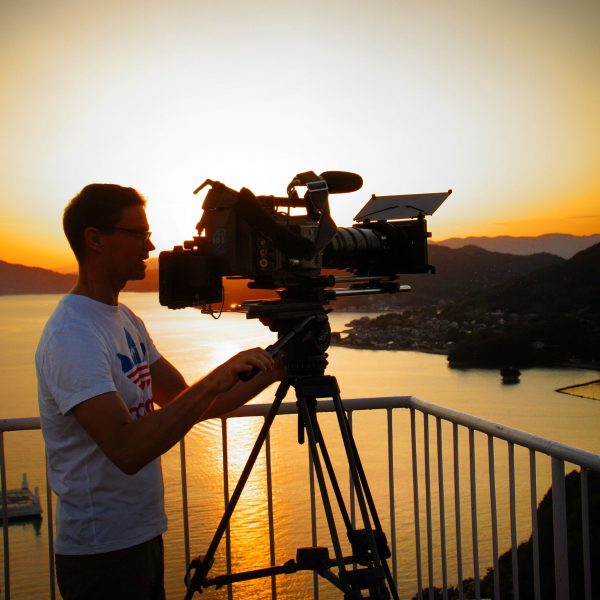Shooting with really wide lenses has always involved a trade-off between the focal length and image performance. The wider the lens, the more edge softness and distortion you tend to get. This can be very evident when shooting architecture – straight lines no longer appear straight and if you have people in the corners of frame they often look distorted and unnatural.
On a recent shoot in Japan I was lucky enough to use the Arri UWZ 9.5-18mm T2.9. NAC Image Technology who are the Arri distributor here in Japan were kind enough to loan me the lens for the shoot. The project involved capturing the Ribbon Chapel in Hiroshima – designed by Hiroshi Nakamura, it was named as a finalist in this year’s World Architecture Festival awards in Singapore.
The Ribbon Chapel stands in a garden of the Bella Vista Sakaigahama resort hotel in Onomichi, Hiroshima. The site is half way up a hill and enjoys a panoramic view of the Inland Sea of Japan. By entwining two freestanding spiral stairways, the building itself is a metaphor for the act of marriage.
According to Nakamura, “Just as two lives go through twists and turns before uniting as one, the two spirals seamlessly connect at their 15.4m summit to form a single ribbon. At the core of their movement is a chapel where the people who have supported the bride and groom are waiting. The chapel aisle looks toward an existing symbol tree. The altar stands before the tree, and 80 seats are positioned for views to the ocean through the trees.”
Filming a building can be very challenging. My goal was to try and capture the experience of being at the Ribbon Chapel and translate that into a visual journey. As the structure’s primary function is as a wedding chapel I wanted my imagery to reflect the beauty and the warmth of a wedding day. By filming the chapel at various times over the course of a day I wanted to show the different personalities it takes on as the light changes.
Trying to convey a sense of space and show how wide the human eye can see is a difficult task. You can try and shoot with a fish eye lens but that ends up leaving you with badly distorted visuals and a very unnatural looking image. The Arri UWZ 9.5-18mm T2.9 was the perfect lens for this assignment and allowed me to capture images that would have been virtually impossible using standard optics. The interior space of the chapel is not that big, but when you are standing inside it feels bigger than it actually is. The UWZ allowed me to replicate what my eye was able to see.
I used the UWZ for a lot of the shots, as well as a TLS 80-200mm T2.8. For a couple of the moving shots I used the Wally Dolly which worked well even when I had to set it up on uneven terrain. Everything was shot on the Arri Amira in 3.2k in ProRes 4444 12bit and then edited in FCPX. I also used a Bright Tangerine Misfit matte box that didn’t cause any vignetting even when using the lens at 9.5mm. For a couple of the shots I used a NiSi 0.9 graduated ND filter to add some more contrast to the sky. Everything was monitored on the Convergent Design Odyssey 7Q+.
The UWZ is a big piece of glass and weighs in at 4.8kg (10.6lb). To use it on my Arri Amira I had to use 19mm rods, a lens support and a Arri dovetail plate attached to my Sachtler 18 P tripod. This made for a very heavy set up, and without a camera assistant it was definitely a challenge carrying everything around. The UWZ uses cutting edge optical technology and for Arri to design a lens this wide that didn’t compromise on image quality they had to do a few things differently. The UWZ doesn’t optically flip the image like most other lenses, it keeps it upside down. I suspect this is one of the lens’s secrets in maintaining its extraordinary optical performance.
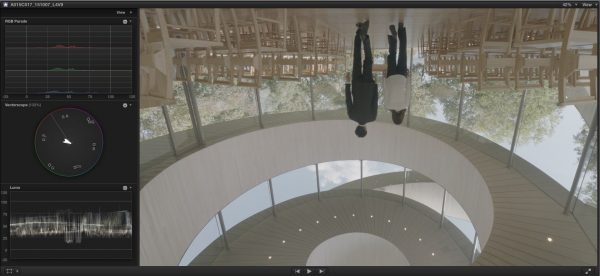 The image is recorded upside down and you need to flip the vision in post.
The image is recorded upside down and you need to flip the vision in post.
The Amira has the ability to flip the image on its side LCD display but not in the EVF. To overcome this problem I used a Convergent Design Odyssey 7Q+ to monitor the signal from the camera and used its image flip function so I could see what I was shooting. It is strange to bring the material into an edit and see everything you shot upside down, but it is very quick and easy to flip the image in most NLE systems.
The type of performance you get with the UWZ doesn’t come cheap. The lens retails for a whopping $58,900 US! This may seem like a ridiculous amount of money to pay for a lens with just a 1.98x zoom range, but for many cinematographers looking to replace two or three prime lenses without sacrificing overall image quality the UWZ makes a lot of sense. The lens is definitely not going to be purchased by most owner-operators, but it has already found its way into a lot of high end rental houses across the world.
Arri already offers the Ultra Prime 8R/T2.8 so you may well be asking why would someone pay almost double the money for the UWZ. The 8R also features a rectilinear design, is wider and significantly smaller in size. It is however only a fixed focal length and has quite a lot of light falloff from the center to its edges. The UWZ is a far more versatile lens.
The main thing you notice when using the UWZ is that it produces a rectilinear image – straight lines remain straight – and stunning quality no matter what focal length you are at. On most wide angle lenses the corners become very soft and straight lines end up warping and become curved.
You could go out and buy a 11-16mm Tokina or 14mm Rokinon/Samyang but there is just no comparison in terms of image quality, distortion, and build quality. The UWZ has a distortion value of less than 1% at 9.5mm and less than 0.01% at 18mm. According to Arri, the ‘telecentric’ design of the new lens helps maintains illumination of 70% across the entire image which is far better than most ultra wide zoom lenses are capable of.
I found the UWZ an absolute pleasure to use. The lens is amazingly sharp even wide open, produces just the right amount of flare and shows almost no signs of softness even in the far corners of the image. The lens is built like a tank and as you would expect for just under $60,000 US the focus, iris and zoom operation are first class. The other amazing thing is the lens has almost no visible breathing at all which is a remarkable feat of engineering.
The UWZ is a remarkable piece of glass for those looking for a ultra wide zoom that doesn’t compromise on image quality. The lens covers a image circle of 34.5 mm and not only comes in a ARRI PL-LDS mount but also a Canon EF mount. I can’t see too many people using this lens in EF mount, but it’s nice to know there is an option. I thoroughly enjoyed using the lens on this shoot and although it produced spectacular imagery I don’t think I will be buying one any time soon. It looks like I will be stuck using my 11-16mm Tokina for ultra wide shots… sigh.
Arri 9.5-18mm T2.9 UWZ features:
Future-proof image circle of 34.5 mm for large sensor cameras
Zoom index marker
Very low image distortion, even at 9.5 mm
Virtually no image breathing
Uniform field illumination, even at close focus
Fixed entrance pupil position over the entire zoom range
Built-in lens support
LDS for lens metadata in VFX applications
Exchangeable matte box interfaces (dia. 134 mm and 156 mm)
Matches other ARRI/FUJINON and ARRI/ZEISS lenses
Available in ARRI PL-LDS or Canon EF mount

